The dollar is headed for a watershed in the next 12 to 18 months which will determine whether it continues to weaken against major trading partners or reverses the long-term trend. The present buoyant conditions are supported by foreign central banks: any move to diversify their reserve holdings into other currencies would place downward pressure on the currency and upward pressure on long-term interest rates. Though unlikely to happen in the near future, as this would amount to biting the hand that feeds them, the current trend cannot continue indefinitely.
Gold faces upward pressure from rising crude oil prices and inflation. If the dollar continues to weaken, the rally should continue.
Equity markets give mixed signals, with the Dow and S&P 500 showing early signs of recovery from the recent secondary correction and transport indicators signaling increased economic activity, but the Nasdaq displays long-term distribution and could drag other indexes lower. Exercise caution and wait for confirmation of the reversal. The FTSE and ASX also show signs of recovery, while the Nikkei has reversed to a primary down-trend in anticipation of the BoJ raising interest rates.
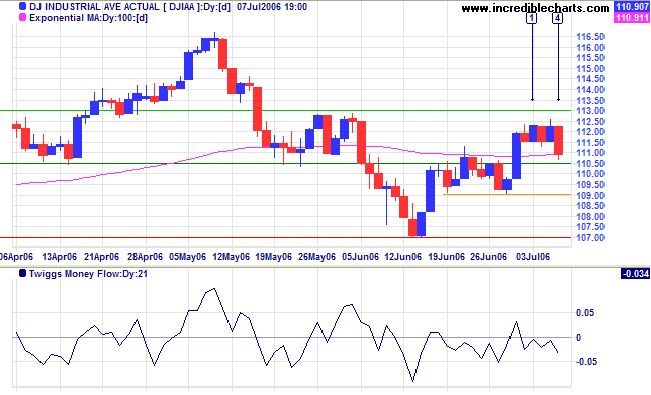
Long Term: The Dow is in a reasonable primary up-trend.
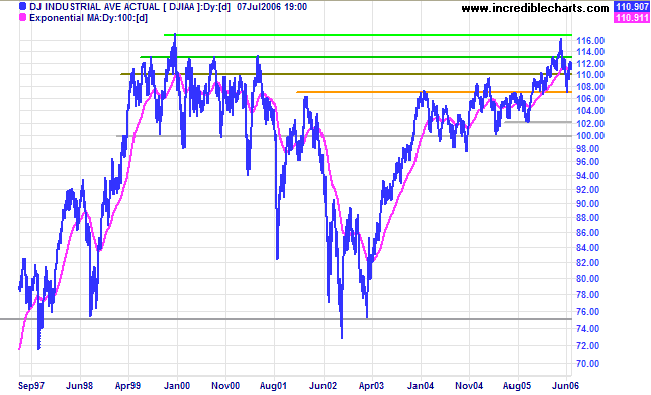
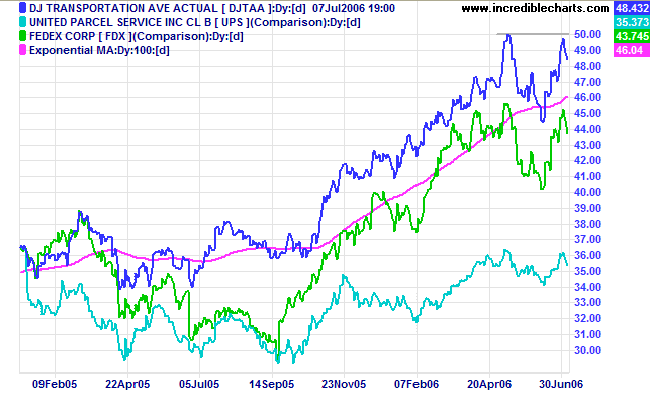
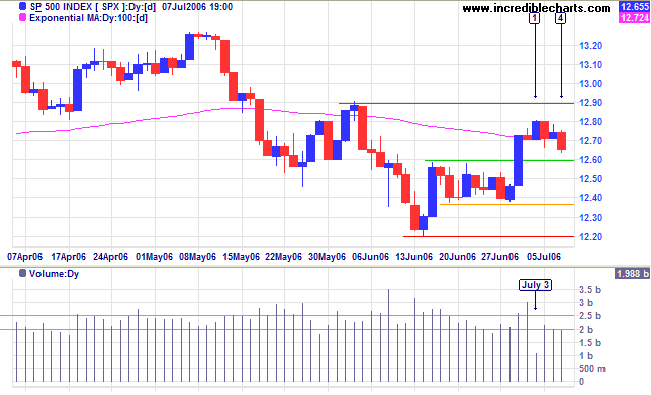
Long Term: The S&P 500 is in a slow up-trend, oscillating within a channel drawn at 2 standard deviations around a linear regression line.
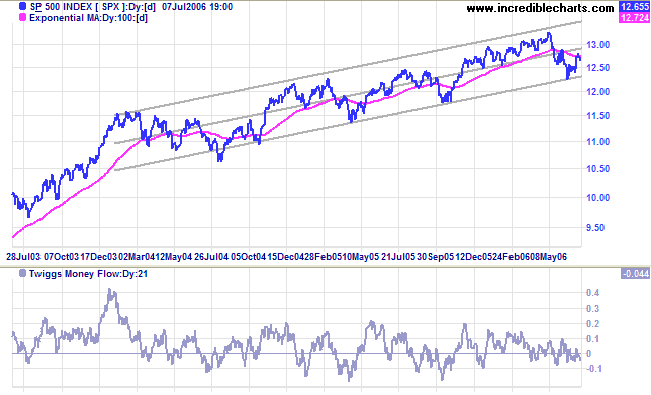
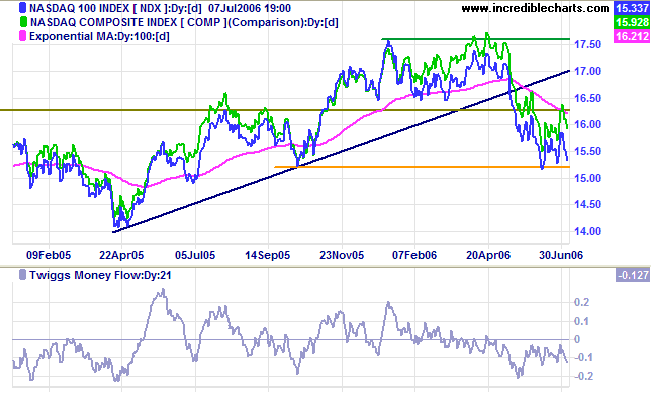
The yield on 10-year Treasury notes is retracing to test support at 5.0%.
Medium Term: Long-bond yields are likely to respect their 100-day exponential moving average and continue in an up-trend.
Long Term: The yield differential (10-year T-notes minus 13-week T-bills) is low, leaving the economy vulnerable if short-term interest rates continue to rise.
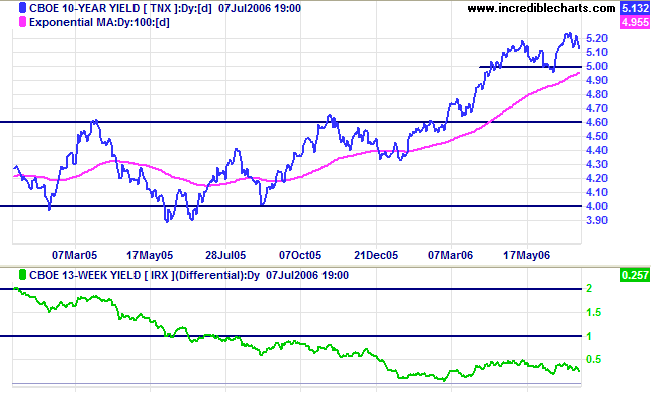
Developed by Fed economist Jonathan H Wright, the Wright Model combines the yield differential and fed funds rate to calculate the probability of recession. Looking ahead at the next four quarters, the probability ticked up slightly, but remains a modest 24%.
Spot gold formed an ascending flag over the past week, normally a continuation signal in an up-trend.
Medium Term: Expect some resistance at $650, while a retracement would test the new support level at $600.
Long Term: Gold continues in a primary up-trend, with support at $535/$540. The gold-oil ratio increased to 8.5. An up-turn below 10 would normally signal buying opportunities, while a down-turn above 20 would indicate selling opportunities. High crude oil prices, inflation and a weakening dollar are bullish influences on the gold price, whereas rising interest rates and a strengthening dollar would be bearish influences.
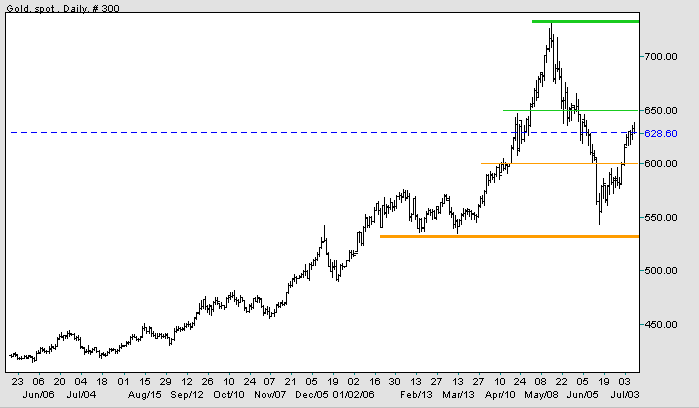
Light Crude broke through medium-term resistance at $74/barrel, completing a bullish double bottom and signaling a test of the previous high at $77. Narrow consolidation above $74 is a bullish sign. Though less likely, a reversal below $74 would signal a test of support at $69; while a close below $69 would mean a test of primary support at $64/$65.
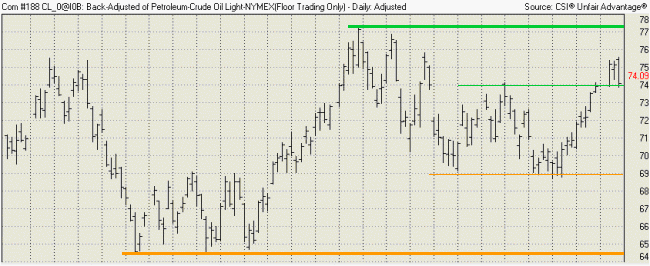
The dollar is weakening against major trading partners in the short-term, but in the long-term may be approaching a major turning point.
EUR/USD: The euro continues its recent rally against the dollar and appears headed for a test of resistance at 1.30.
Long-term: A fall below 1.165 would complete a major head and shoulders reversal (with a target of 0.97: 1.17 - (1.37 - 1.17)). A rise above 1.30, on the other hand, would test the previous high of 1.37.

Long-term: A rise above the January 2006 high of 121.50 would break the bearish descending triangle started in 1998 and signal a primary up-trend. A fall below 100, on the other hand, would be a strong bear signal.
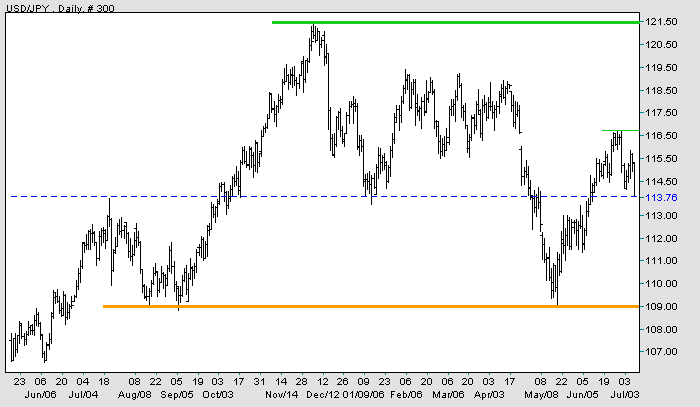
After completing a bullish double bottom, the FTSE 100 consolidated in a narrow range above the new support level. Generally a continuation pattern, the consolidation signals that a test of the previous high at 6130 is likely.
Medium Term: Declining volume on the latest rally signals weakness, though the last week was affected by the July 4th holiday in the US. Twiggs Money Flow (21-day) climbed above zero, signaling accumulation. A close above 5900 would add further confirmation, as would a pull-back that respects support (or the 100-day exponential moving average) at 5800. Though less likely, a close below 5800 would signal a test of primary support at 5500.
Long Term: The FTSE 100 continues in a primary up-trend.
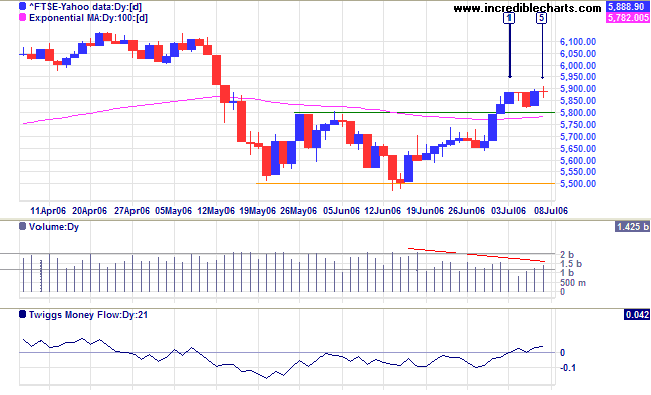
The Nikkei 225 completed a false break, retreating below 15500 after two days.
Medium Term: The latest retracement is a strong bear signal, with the index respecting both resistance at 15500 and the 100-day exponential moving average from below. A close below 15000 would confirm the down-trend.
Long Term: The index is in a primary down-trend. Support levels are at 14000 and 13000, with major support at 12000.
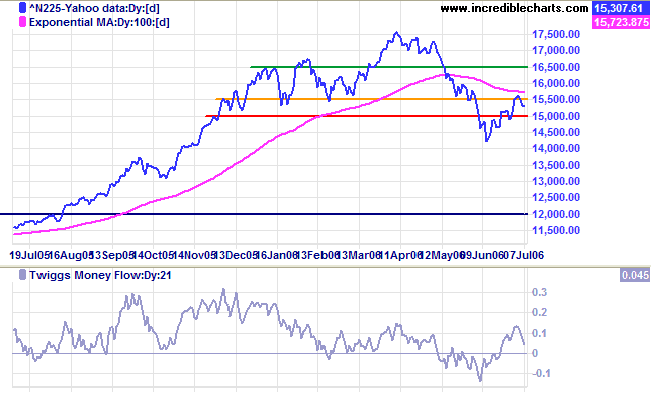
The All Ordinaries took several days to overcome resistance at 5080, but Friday's breakout confirms the end of the secondary correction. Expect a test of the previous high at 5350. Reversal below the new support level, however, would signal a test of primary support at 4800.
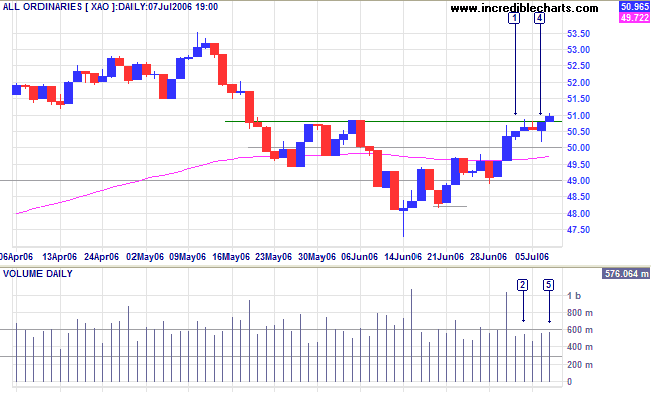
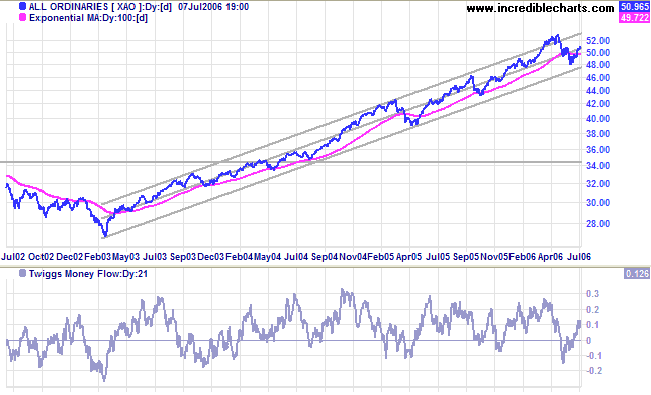
You can stand there with the bat on your shoulder for six months until you get a fat pitch.
~ Warren Buffett

Author: Colin Twiggs is a former investment banker with almost 40 years of experience in financial markets. He co-founded Incredible Charts and writes the popular Trading Diary and Patient Investor newsletters.
Using a top-down approach, Colin identifies key macro trends in the global economy before evaluating selected opportunities using a combination of fundamental and technical analysis.
Focusing on interest rates and financial market liquidity as primary drivers of the economic cycle, he warned of the 2008/2009 and 2020 bear markets well ahead of actual events.
He founded PVT Capital (AFSL No. 546090) in May 2023, which offers investment strategy and advice to wholesale clients.
